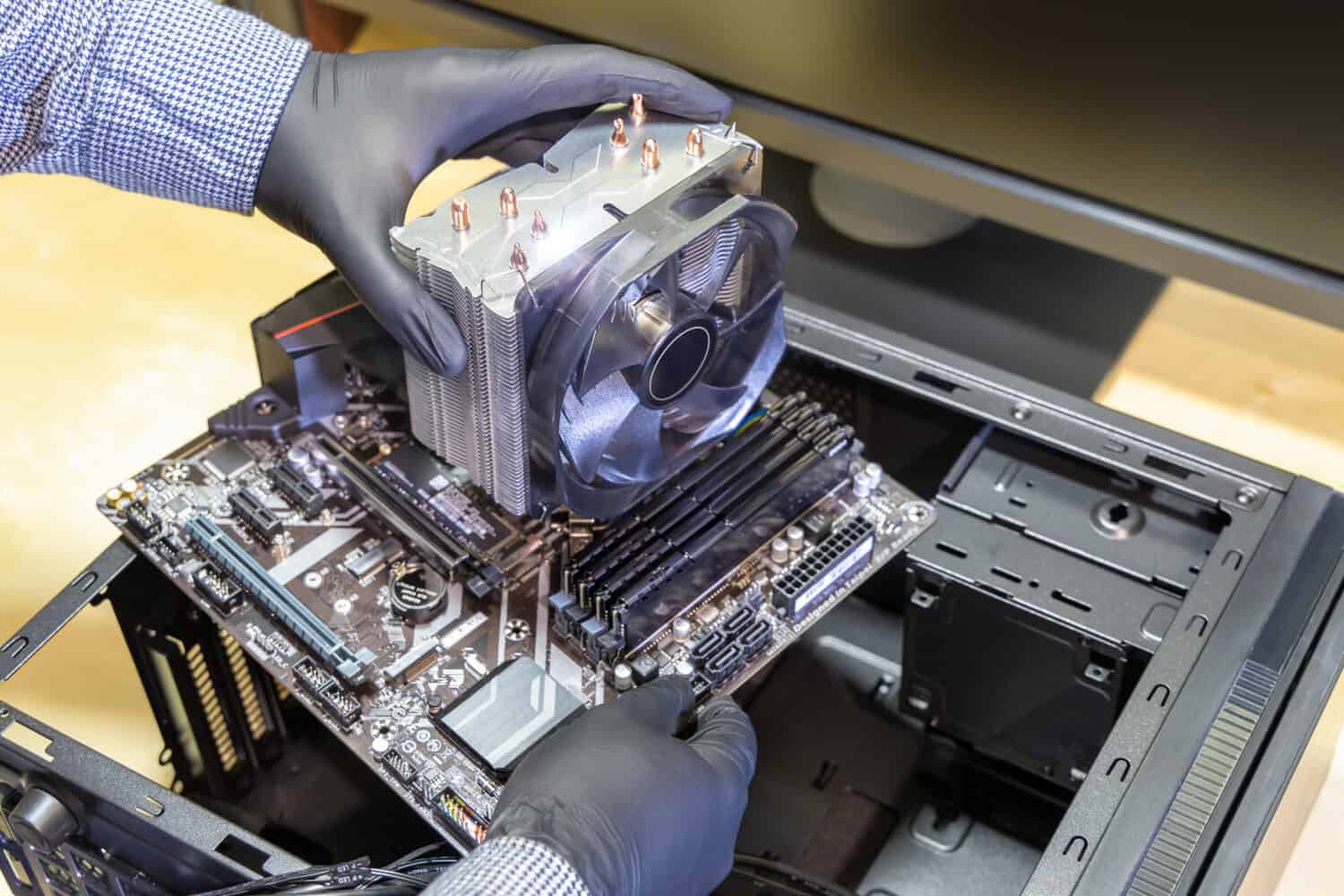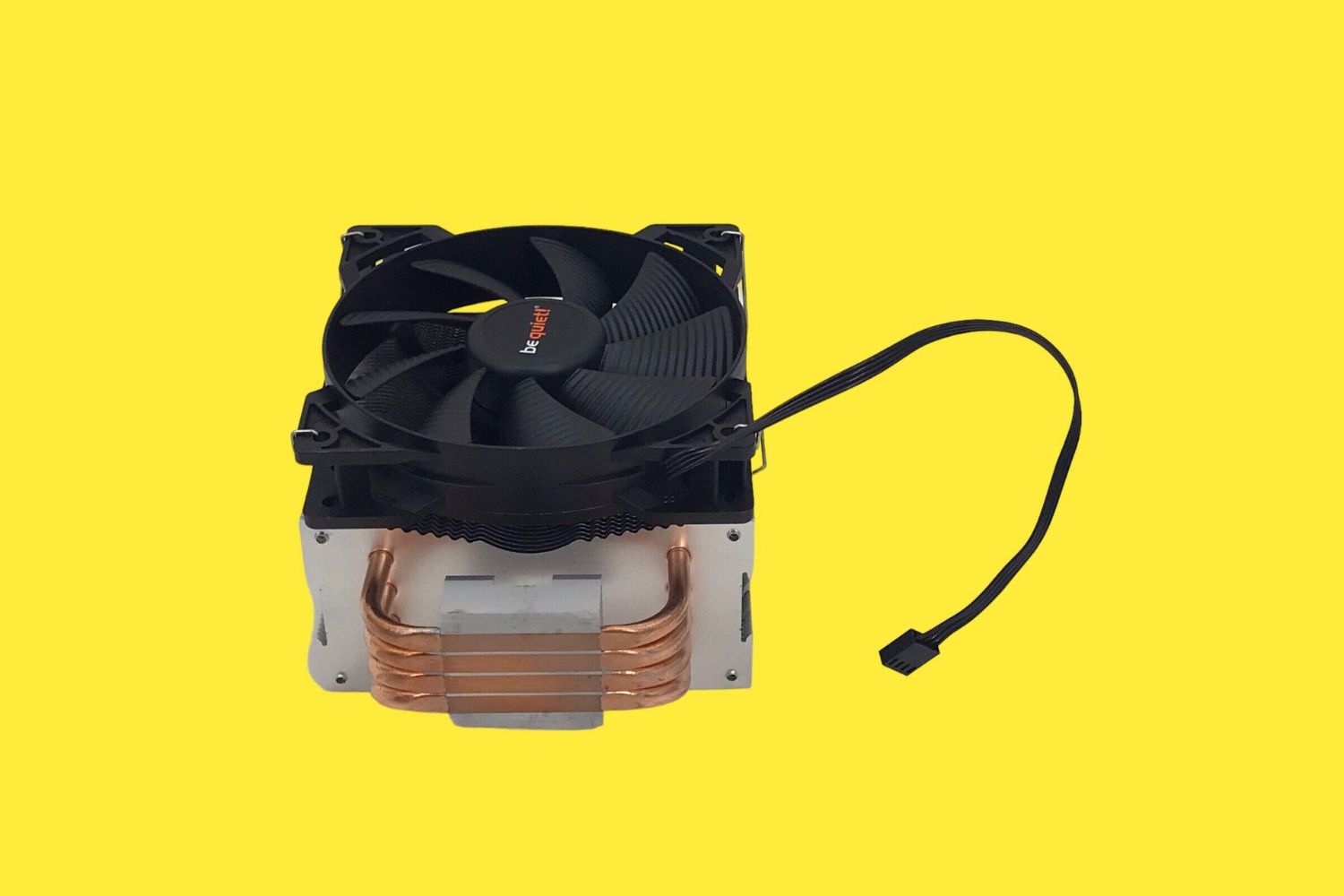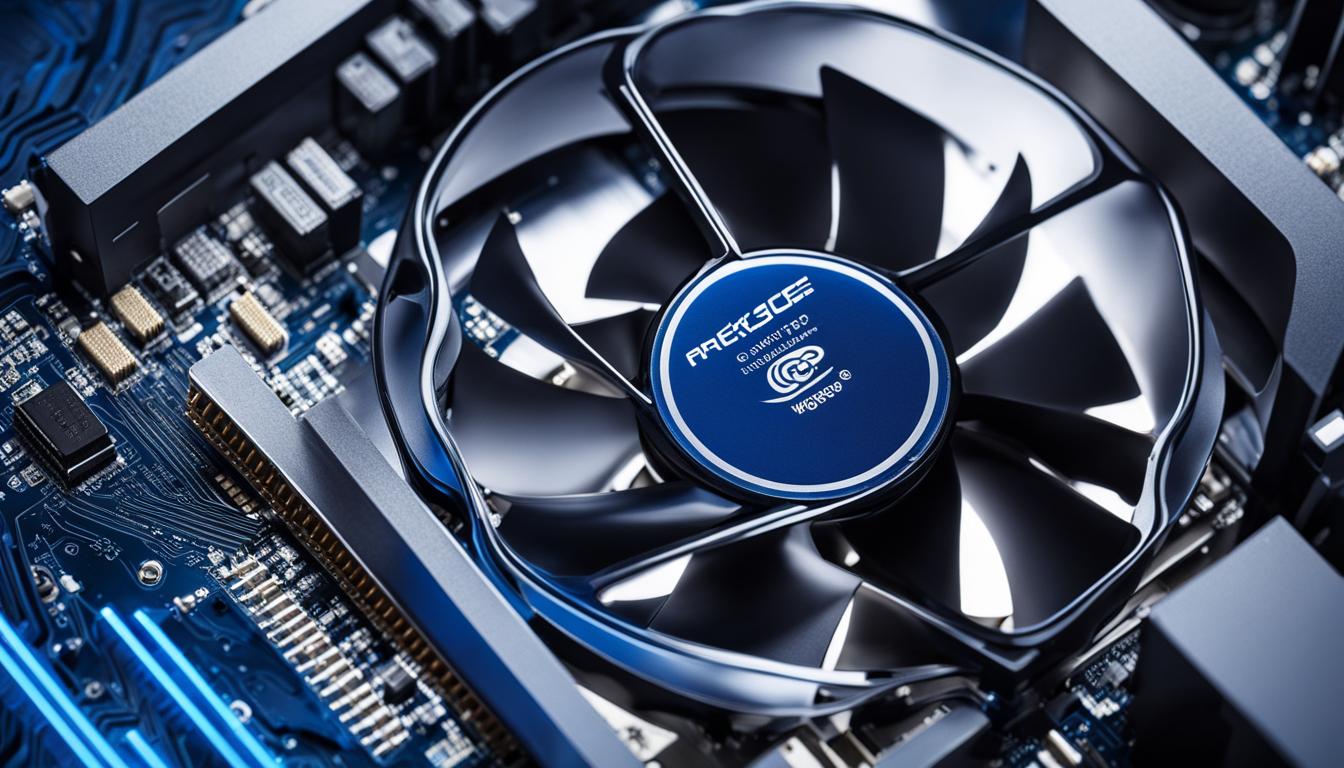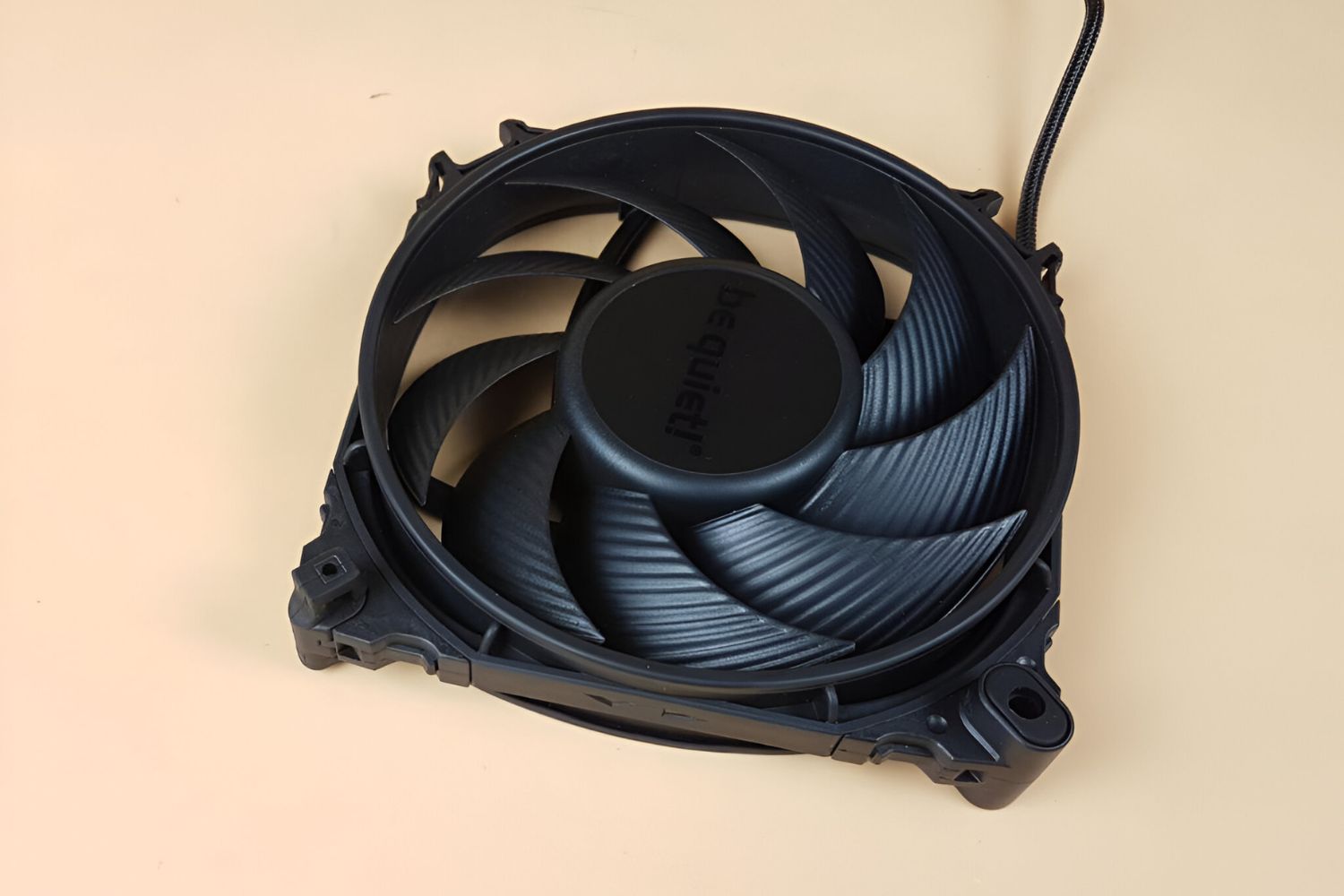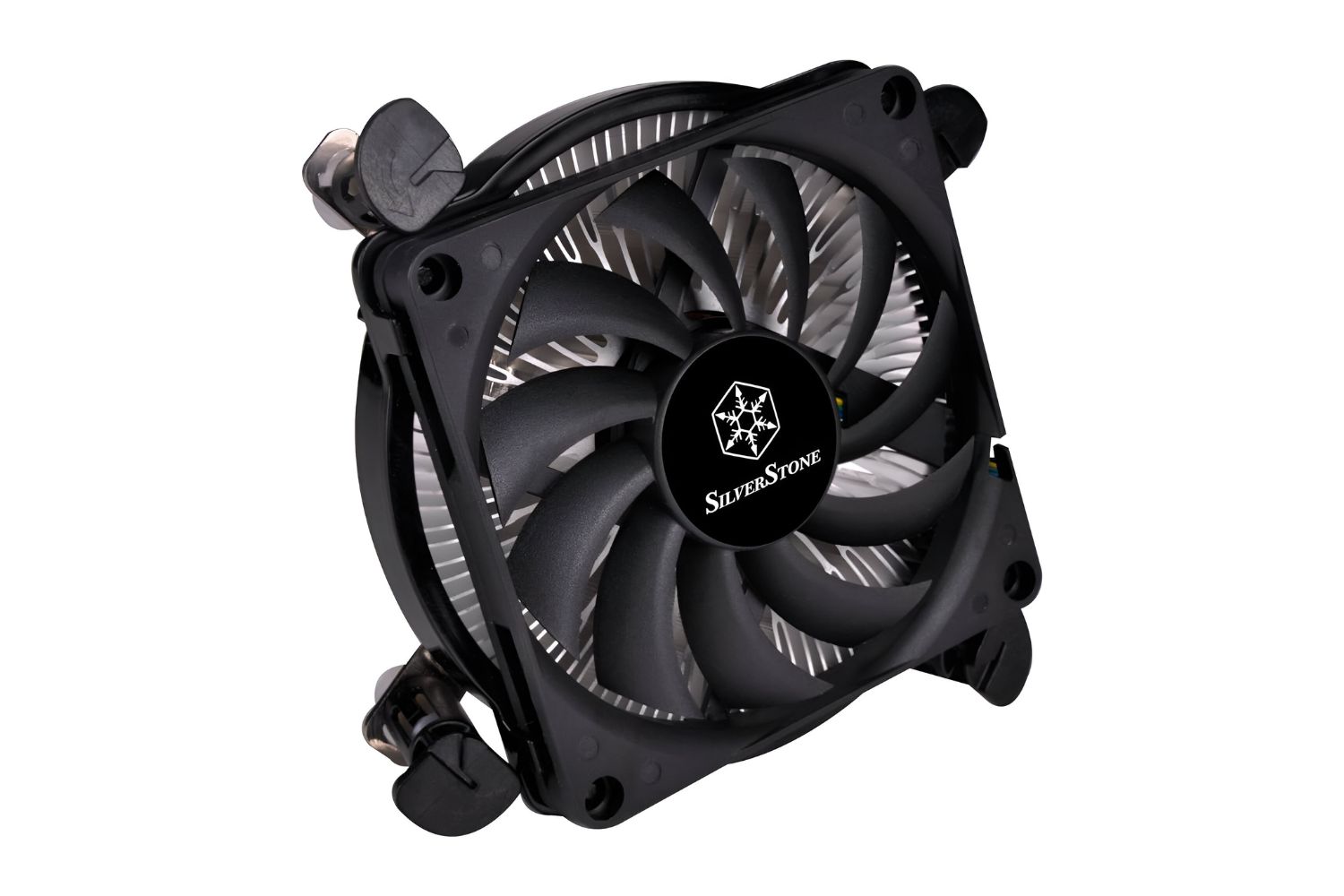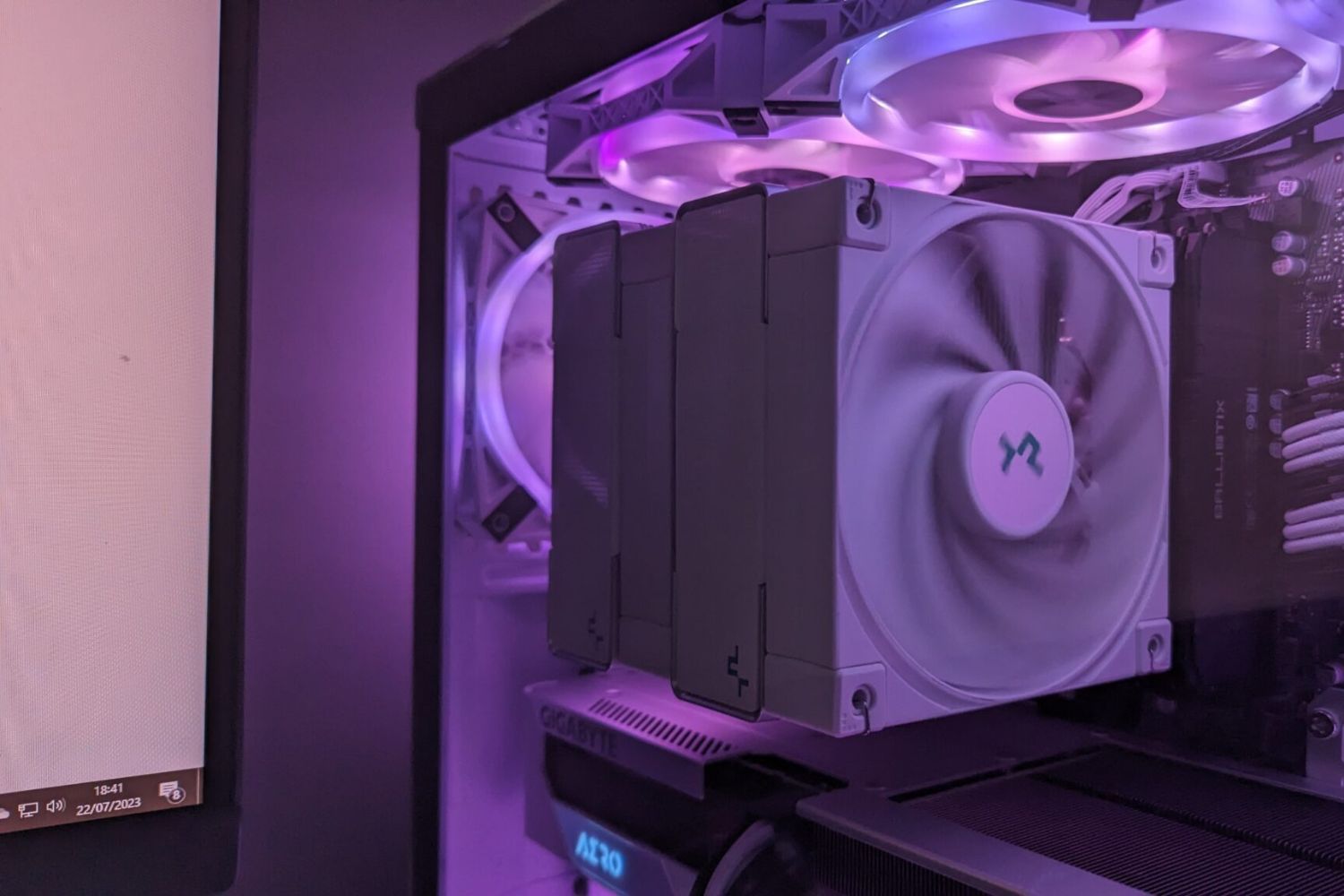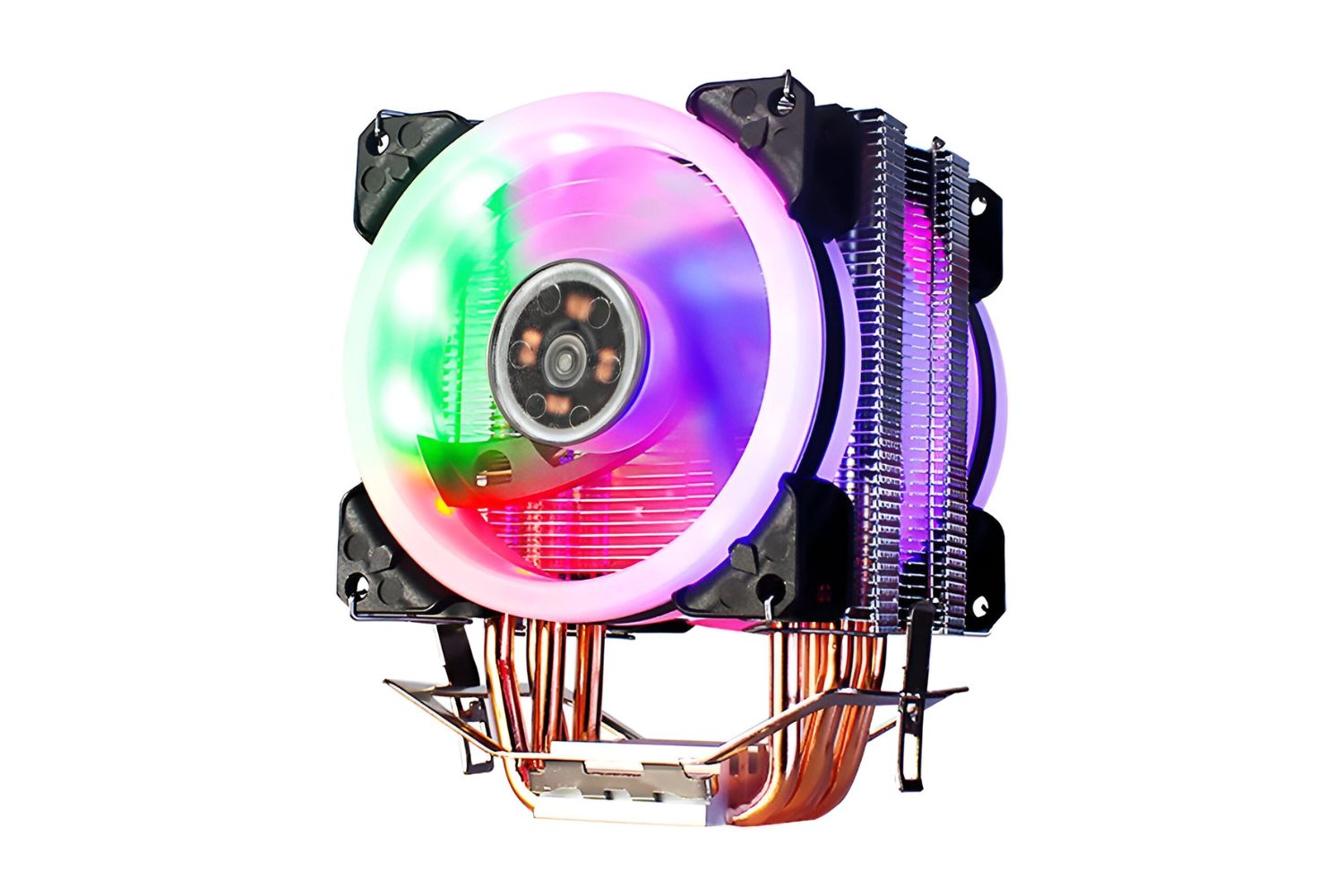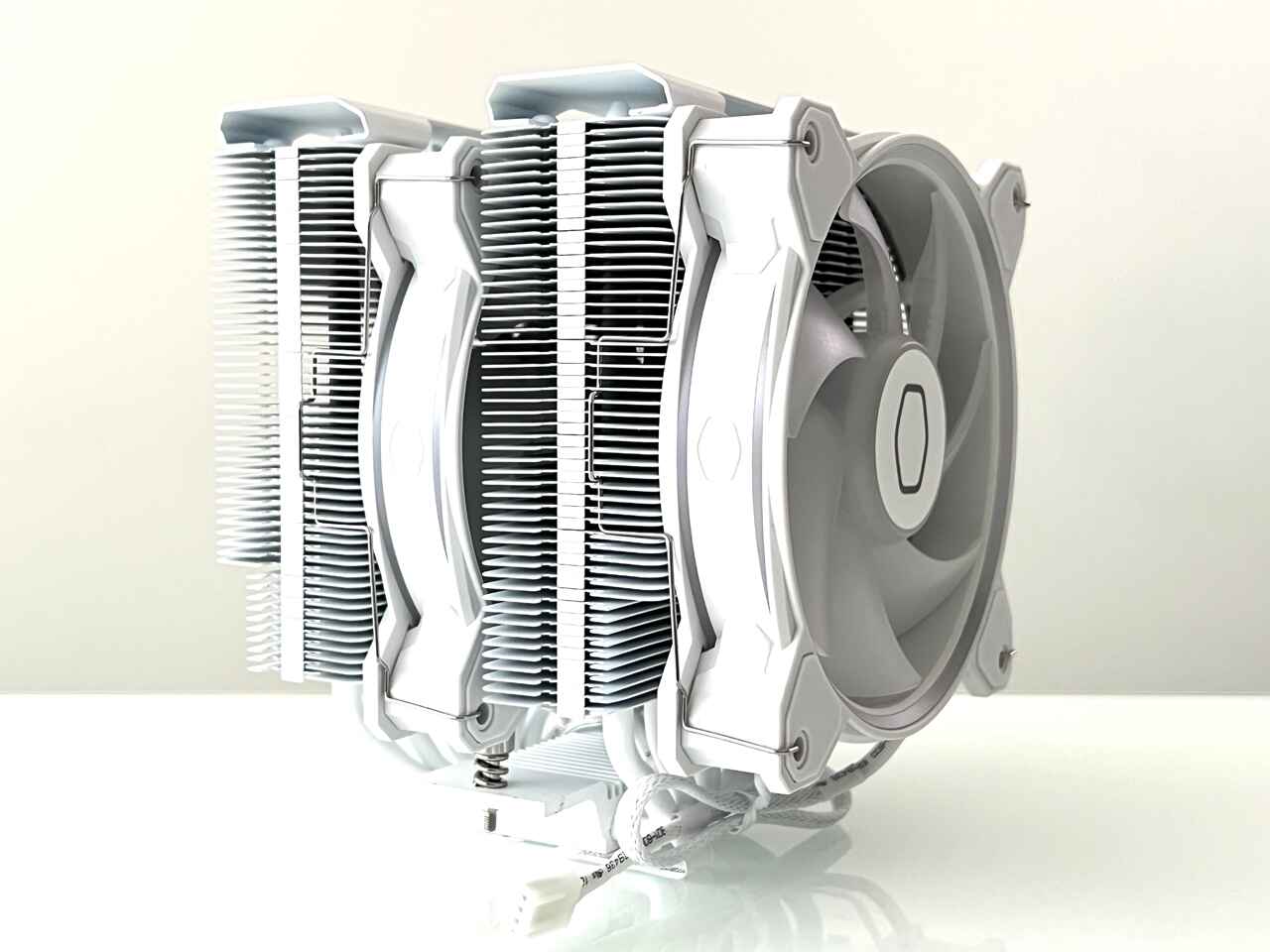Introduction
The CPU cooler is an essential component of a computer system that helps to regulate the temperature of the central processing unit (CPU), ensuring it operates efficiently and avoids overheating. Understanding the type and model of your CPU cooler is crucial for various reasons, such as upgrading or troubleshooting. However, determining the exact CPU cooler installed in your computer can be a little challenging if you don’t have the proper documentation or knowledge.
Fortunately, there are several methods you can use to find out what CPU cooler you have. This article will guide you through various techniques, from checking the computer documentation and manufacturer’s website to using software tools and physically examining the hardware. By following these steps, you’ll be able to identify the CPU cooler in your system without any hassle.
It’s important to note that the method you choose may depend on the type of computer you have, whether it’s a pre-built system or a custom-built one. So, let’s dive in and explore the different methods for finding out what CPU cooler you have in your computer.
Checking the computer documentation
One of the first places to look when trying to find out what CPU cooler you have is the computer documentation that came with your system. This documentation usually includes a list of the components that are included in your computer, including the CPU cooler. The documentation may come in the form of a user manual, an installation guide, or a specification sheet.
Start by checking the documentation that came with your computer or motherboard. Look for any information related to the CPU cooler, such as its brand, model, and specifications. Pay attention to any specific names or logos that may indicate the manufacturer of the CPU cooler. Make note of this information as it will help you identify the CPU cooler later on.
If you cannot find the documentation that came with your computer, you can also search for it online. Visit the manufacturer’s website and look for the product page or support section for your specific computer model or motherboard. Often, they provide downloadable versions of the user manual or documentation for your convenience. Refer to the CPU cooler section or the specifications sheet to find the necessary details.
Keep in mind that the availability of documentation may vary depending on the brand and the age of your computer. Older systems may not have detailed information about the CPU cooler included, or the manufacturer’s website may no longer have the relevant documentation available. In such cases, you may need to explore other methods to identify the CPU cooler in your computer.
Checking the computer manufacturer’s website
If you are unable to locate the documentation for your computer or if it doesn’t provide sufficient information about the CPU cooler, another method you can try is checking the computer manufacturer’s website.
Start by visiting the support section of the manufacturer’s website. Look for your specific computer model or motherboard and navigate to its product page. Once there, you may find specifications or details about the components included in the system. Look for any information related to the CPU cooler, such as its brand, model, and specifications.
Some manufacturers also provide detailed system configurators on their websites. These configurators allow you to enter your computer’s model and serial number to retrieve information about the components installed in your system. This can be a valuable resource for finding out what CPU cooler you have without having to physically inspect your hardware.
If you are unable to find the necessary information on the manufacturer’s website, consider reaching out to their customer support for assistance. They may be able to provide you with the details about the CPU cooler in your computer based on its model and serial number. Be prepared to provide them with the necessary information about your computer to help them assist you more effectively.
Remember, checking the computer manufacturer’s website can be a valuable resource, especially if you have a pre-built computer. However, if you have a custom-built system, the CPU cooler may have been upgraded or replaced by a different brand or model. In such cases, it’s worth exploring other methods to determine the CPU cooler in your computer.
Checking the BIOS settings
Another method to find out what CPU cooler you have is by checking the BIOS settings of your computer. The BIOS (Basic Input/Output System) is a firmware that is responsible for controlling various hardware components, including the CPU cooler.
To access the BIOS settings, restart your computer and look for the specific key or key combination to enter the BIOS. This key or combination is usually displayed on the initial boot screen or mentioned in the computer’s user manual. Common keys include F2, F12, Delete, or Esc.
Once you are in the BIOS settings, navigate to the hardware or system information section. Look for any mention of the CPU cooler. Some BIOS interfaces provide detailed information about the components installed in your computer, including the CPU cooler make and model.
If you are unable to find explicit information about the CPU cooler in the BIOS settings, look for the CPU temperature or fan speed monitoring options. These options can often provide you with clues about the type and model of the CPU cooler installed.
Keep in mind that not all BIOS interfaces provide detailed information about the CPU cooler. The level of detail provided may vary depending on the manufacturer and the specific BIOS version. If you are unable to find the necessary information, consider exploring other methods to determine the CPU cooler in your computer.
It’s important to note that accessing the BIOS settings requires caution, as any changes made to the settings can affect the functionality of your computer. Make sure to only navigate and view the settings without making any modifications unless you are familiar with the BIOS and its implications.
Checking the Windows System Information
If you are using a Windows computer, another method to find out what CPU cooler you have is by checking the Windows System Information utility. This built-in tool provides detailed information about the hardware components of your computer, including the CPU cooler.
To access the Windows System Information, press the Windows key + R on your keyboard to open the Run dialog box. Type “msinfo32” without the quotation marks and press Enter. This will launch the System Information window.
In the System Information window, navigate to the “Components” section and click on “Display.” Here, you will find detailed information about your CPU, including the manufacturer, model, and other specifications. The CPU cooler information may be listed under the CPU or cooling-related categories.
Take note of the CPU cooler make and model information found in the System Information window. You can use this information to further research the CPU cooler or reach out to the manufacturer for more details if needed.
It’s important to keep in mind that the level of detail provided in the Windows System Information utility may vary depending on the hardware configuration and the Windows version you are using. If you do not find explicit information about the CPU cooler, consider exploring other methods or software tools to identify the CPU cooler in your computer.
The Windows System Information utility is a handy tool that can provide valuable information about the CPU cooler installed in your computer without requiring any third-party software or advanced technical knowledge.
Using third-party software
If the previous methods didn’t provide the necessary information to determine your CPU cooler, you can turn to third-party software tools designed to gather detailed hardware information. These tools can provide comprehensive insights into the components of your computer, including the CPU cooler.
There are several popular third-party software options available that can help you identify your CPU cooler. CPU-Z and Speccy are two widely used tools that provide detailed information about your computer’s hardware, including the CPU cooler make, model, and specifications.
After downloading and installing one of these software tools, launch the program and navigate to the CPU or cooling sections. Here, you will find relevant details about your CPU cooler, such as its brand, model, fan speed, and temperature.
These software tools are user-friendly and do not require extensive technical knowledge to use. They can be a convenient and efficient way to gather detailed information about your CPU cooler.
It’s worth noting that while third-party software tools can provide accurate information about your CPU cooler, it’s always a good idea to cross-reference the information with other methods, such as checking the computer documentation or manufacturer’s website. This helps ensure the accuracy and reliability of the information gathered.
Using third-party software can be particularly useful for identifying CPU coolers in custom-built computers, as they may contain components from various manufacturers and may not have readily available documentation.
Remember to download third-party software tools from trusted sources to avoid any potential security risks or malware. It’s always recommended to use reputable software and verify the legitimacy of the source before installing any applications on your computer.
Opening the computer case
If you’re comfortable with working inside your computer and have experience handling computer hardware, you can physically open the computer case to determine the CPU cooler you have. This method allows you to visually inspect the components and gather accurate information about your CPU cooler.
Before opening the computer case, ensure that your computer is powered off and disconnected from any power source. Take necessary precautions, such as wearing an anti-static wristband or grounding yourself, to prevent any electrostatic discharge that could damage the components.
Once you have taken the necessary safety measures, carefully remove the screws or fasteners holding the computer case together. Gently slide off or open the case, exposing the internal components.
Locate the CPU cooler, which is typically attached to the CPU socket on the motherboard. It consists of a heatsink, fan, and sometimes additional cooling components. Take note of the brand, model, and any other identifying information on the CPU cooler. Some coolers may have a manufacturer logo or model number visible on the fan or the heatsink.
If necessary, you can also remove the CPU cooler to get a closer look and gather more details about the make and model. However, keep in mind that removing the CPU cooler requires proper handling and thermal paste reapplication when reassembling.
After examining the CPU cooler, reassemble the computer case by securely fastening the screws or fasteners. Ensure that all components are properly connected and aligned before powering on your computer.
Opening the computer case can provide you with accurate information about your CPU cooler, as you can physically inspect and gather details about the make and model. However, it’s essential to exercise caution and have the necessary knowledge and experience to handle computer hardware safely.
If you are uncertain or uncomfortable with opening your computer case, it is advisable to explore other methods or seek assistance from a knowledgeable professional who can help identify the CPU cooler in your computer.
Taking a picture of the CPU cooler
If you prefer a non-intrusive method to identify your CPU cooler, taking a picture of it can be a simple and effective solution. This method allows you to capture a visual record of the CPU cooler, which you can then use for further research or consultation with experts.
To take a picture of the CPU cooler, start by powering off your computer and disconnecting it from any power source. Open the computer case and locate the CPU cooler, which is typically situated on top of the CPU.
Find a suitable angle and lighting conditions to capture a clear and detailed image of the CPU cooler. Ensure that the picture captures the entire CPU cooler, including any labels, logos, or model numbers present on it. Taking multiple pictures from different angles can also be helpful.
Once you have taken the pictures, review them to make sure they are clear and focused. If necessary, adjust the lighting or retake the pictures to ensure the details are easily visible.
After you have the pictures, you can use them for further investigation. You can search for the specific brand or model of the CPU cooler online, compare it with known models, or consult with computer experts or enthusiasts on forums or tech communities.
Note that this method may not always provide detailed information about the CPU cooler, especially if there are no visible labels or logos. However, it can be a valuable starting point for identification or seeking assistance from others who may have experience with similar CPU coolers.
Taking a picture of the CPU cooler offers a non-intrusive way to gather information about your computer’s hardware without requiring in-depth technical knowledge or physically handling the components.
If you are unsure about the make and model of your CPU cooler or need additional information, consider combining this method with other approaches, such as checking the computer documentation or consulting with computer experts.
Researching the model number online
If you have access to the model number of your CPU cooler, researching it online can provide you with valuable information about its specifications, compatibility, and manufacturer details. This method allows you to leverage the vast resources available on the internet to identify your CPU cooler.
To begin, locate the model number of your CPU cooler. You can find this information by referring to the computer documentation, manufacturer’s website, BIOS settings, or even by physically inspecting the cooler itself. The model number is often a combination of letters and numbers that uniquely identifies the specific CPU cooler model.
Once you have the model number, use search engines, manufacturer websites, and computer hardware forums to look up the model. Enter the CPU cooler model number into a search engine and explore the results. Look for official manufacturer pages, product listings on e-commerce websites, technical forums, or reviews that mention the specific CPU cooler model.
By researching the model number online, you can find comprehensive information about the CPU cooler, including its specifications, performance metrics, fan speed, noise levels, and other relevant details. Some manufacturer websites provide detailed documentation or user manuals for their products, which can offer additional insights into the CPU cooler.
It’s important to verify the sources of information and ensure that you are referring to reliable and reputable websites. Official manufacturer websites, reputable technology review platforms, and established computer hardware forums are generally good sources of accurate and up-to-date information.
While researching the model number online can be an efficient way to gather information about your CPU cooler, it’s important to keep in mind that some older or less common models may have limited information available. In such cases, consider exploring other methods or consulting with computer experts to obtain the necessary details.
Remember to take note of the relevant information you discover during your research, as it can help you in future troubleshooting, upgrades, or when seeking assistance from computer experts.
Researching the model number online empowers you to utilize the vast knowledge and resources available on the internet to learn more about your CPU cooler, its specifications, and potential compatibility with your computer system.
Consulting with computer experts
If you have exhausted your options and still can’t determine the exact model of your CPU cooler, consulting with computer experts can provide valuable insights and assistance. Computer experts, such as technicians or enthusiasts, possess knowledge and experience in dealing with various hardware components, including CPU coolers.
There are several ways to seek advice from computer experts. You can approach local computer repair shops or service centers and inquire if they can help you identify your CPU cooler. They may have the necessary resources, tools, and expertise to inspect your computer and provide accurate information about the CPU cooler.
Another option is to participate in online communities, forums, or tech support groups specifically dedicated to computer hardware. These platforms are populated by individuals who have in-depth knowledge of computer components and are willing to share their expertise. Post your question, provide any relevant details or pictures of your CPU cooler, and ask for assistance in identifying its model.
When seeking advice from computer experts, be sure to provide as much information as possible about your computer system, such as the motherboard model, computer brand, and any other relevant details. This will help the experts provide more accurate and targeted guidance.
It’s important to be patient and respectful when consulting with computer experts. Remember that they are providing their expertise voluntarily, so it may take time for them to respond. Show appreciation for their help and consider contributing to the community by sharing your knowledge or experiences.
Keep in mind that while consulting with computer experts can be a reliable method, it may require some time and effort to find the right sources or individuals. The accuracy of the information provided by the experts also depends on their knowledge and understanding of CPU coolers.
Consulting with computer experts is particularly beneficial when other methods have failed to identify your CPU cooler or when you need more specialized advice regarding compatibility, performance, or potential upgrades. Their expertise can help you make informed decisions about your hardware and ensure the optimal functioning of your computer system.









